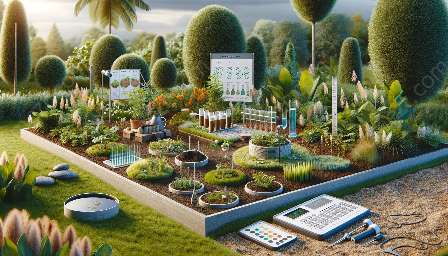Plants play a crucial role in horticulture, agriculture, and forestry, and understanding their morphology is essential for successful cultivation and management. In this comprehensive guide, we will explore the various aspects of plant morphology, from roots and stems to leaves and flowers, and highlight their significance in different fields.
The Importance of Plant Morphology in Horticulture
Plant morphology is the study of the physical form and external structure of plants. In horticulture, understanding plant morphology helps in plant selection, proper spacing, and maintenance practices. By recognizing the characteristic features of different plant species, horticulturists can make informed decisions about plant placement and care, leading to healthier and more visually appealing landscapes.
Root Morphology and Function
The root system of a plant provides structural support and facilitates the uptake of water and nutrients from the soil. Different plants exhibit varying root morphologies, such as taproots in carrots and fibrous roots in grasses, each suited to their respective environments and growth habits. Understanding root morphology is crucial for transplanting, managing soil erosion, and optimizing water and nutrient absorption in horticultural settings.
Stem Morphology and Function
Stems serve as the main axis of a plant, providing structural support and transporting water, nutrients, and photosynthetic products between the roots and leaves. In horticulture, knowledge of stem morphology is essential for pruning, grafting, and training plants to attain specific forms. Different stem types, such as herbaceous and woody stems, require different care practices to ensure healthy growth and productivity.
Leaf Morphology and Function
Leaves are essential for photosynthesis, the process by which plants convert light energy into chemical energy. Understanding leaf morphology, including leaf shape, arrangement, and surface features, helps horticulturists identify and classify plant species. Furthermore, the study of leaf anatomy aids in diagnosing nutrient deficiencies, diseases, and environmental stress, enabling targeted interventions to maintain plant health and vigor.
Plant Morphology and its Role in Agriculture and Forestry
In agricultural and forestry practices, plant morphology plays a vital role in crop management, agroforestry, and ecosystem conservation. By comprehending the morphology of key plant components, farmers and foresters can optimize resource utilization, improve productivity, and sustainably manage natural areas.
Reproductive Structures: Flowers and Fruits
Understanding the morphology of flowers and fruits is fundamental for crop breeding, pollination, and fruit production in agriculture. By recognizing diverse flower structures and modes of pollination, farmers can implement effective pollination strategies to enhance crop yields and quality. Similarly, in forestry, knowledge of fruit morphology aids in seed collection, propagation, and regeneration efforts, essential for forest management and restoration.
Adaptations for Environmental Resilience
Plants exhibit a wide range of morphological adaptations to survive and thrive in diverse environments. Traits such as root depth, leaf size, and stem architecture contribute to plant resilience in harsh conditions, including drought, high winds, and extreme temperatures. In agriculture and forestry, understanding these adaptations is crucial for selecting suitable plant species, implementing agroecological practices, and mitigating the impact of environmental stressors on crop and forest health.
Morphological Traits for Plant Identification
Morphological characteristics are essential for the identification and classification of plant species in agriculture and forestry. By examining features such as leaf shape, flower structure, and growth habit, farmers and foresters can distinguish beneficial plants from pests, weeds, and invasive species. Accurate plant identification is pivotal for designing effective management strategies, conserving biodiversity, and safeguarding agricultural and forest ecosystems.
In Conclusion
Plant morphology forms the foundation of successful horticulture, agriculture, and forestry practices. By delving into the intricate structure and functions of plants, professionals in these fields can make informed decisions, enhance productivity, and contribute to sustainable management of natural resources. Whether it's identifying a plant for landscape design, optimizing crop production, or conserving forest biodiversity, the value of plant morphology cannot be overstated.



